About Us
Learning from Switzerland (2)
- Movable bridge as a measure against wooden debris flows -
Japan has been suffering from severe disasters every year due to "extreme" heavy rains which has never been experienced before in the affected areas. The disaster of Izu-Oshima Island in October 2013 was one of such disasters where the debris-flows due to heavy rains (824mm/24 hours, 1,200mmm/3 days) killed 39 persons and destroyed 133 houses.
A series of meetings were held to review the disaster and to identify issues for DRR in the future. One of issues identified was the massive wooden debris which worsened the disaster situation and hampered rescue operation. Construction of sabo dams, forestation of watershed etc. were proposed.
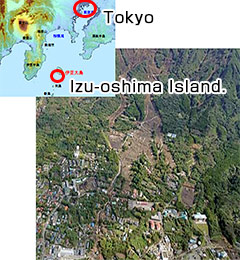
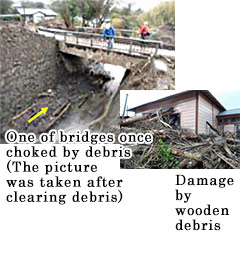
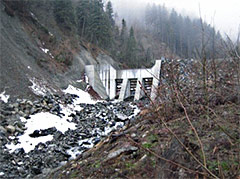
Sabo dam to trap debris
I remembered that when I visited Switzerland in 2013 there was a movable bridge over a river channel to solve the wooden debris problem, while constructing sabo dams to trap wooden debris in the upstream areas.
I asked my friends in Switzerland for information on the movable bridge in that country, who kindly sent me the information as given below. The wooden debris problem being rather common to many countries, I would like to briefly explain the movable bridge in Switzerland here, leaving the details in "New Technology" of this Network
There are three types : Lifting up, Lateral sliding and Collapse/wash away.
An example for "Lifting up" is Saltina bridge in Kanton Valais. The bridge (152 tons) can be lifted up for 2.8 meters manually using hydraulic counter-weight. The cost for construction was 2.2 million CHF.
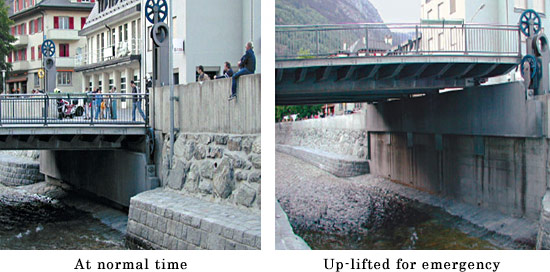
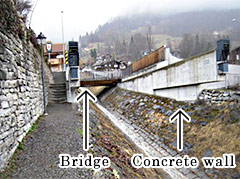
An example for "Lateral sliding" is a bridge over the Trachtbach torrent along a main road in Brienz. The bridge (8.5 meters in length, 9.0 meters in width) is to slide on the concrete wall laterally at the same elevation for 22 meters downwards along the channel, thus the normal flow section of 10 m2 with the clearance under the bridge of 1.8 meters can be enlarged to 24 m2 with the clearance of 4.4 meters. The local fire service moves the bridge manually. It takes about one hour for the complete operation, and it is designed that the debris-flows should also be able to move the bridge by oneself.
An example for "Collapse/wash away" is a "light" bridge over the Trachtbach, which was constructed with wooden materials but is passable by cars and busses. It is easily collapsed by debris flows and washed downstream wards into the Brienz lake. There are several similar bridges over torrents flowing into the lake.
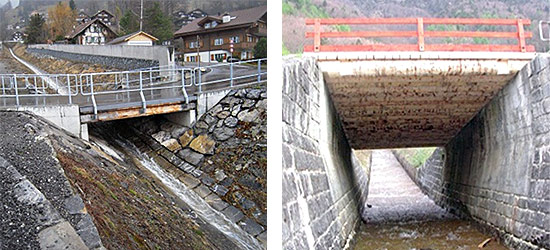
Light wooden bridges to be collapsed and washed away by debris flows
Mentioned above are rather small bridges but might be applicable to many torrents in many countries. If the debris problem is significant for areas along the river, movable bridges can be considered for larger bridges even though it may cost much.
For more information please access to the following and refer to "New Technology" in this International Sabo Network.
- http://www.planat.ch/en/images-details/datum/2010/09/13/hochwasser-brig-1993/
- http://www.saltinabruecke.ch/
Switzerland has a long history of the movable bridge since the disaster in Brig-Glis in 1993. If any ISN member has information on similar practices, we are happy to receive it for the wider information sharing among members.
In conclusion I should express sincere thanks to Mr. Andreas Goetz, National Platform for Natural Hazards PLANAT and Mr. Oliver Hitz, Engineering Office of Canton Bern for giving us useful information in detail.
March 2014
Hidetomi Oi
President, International Sabo Association